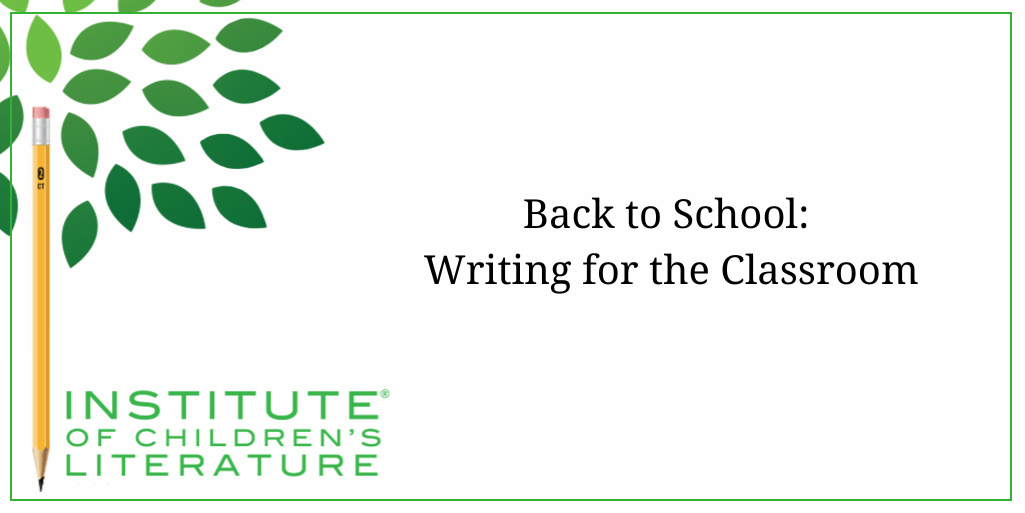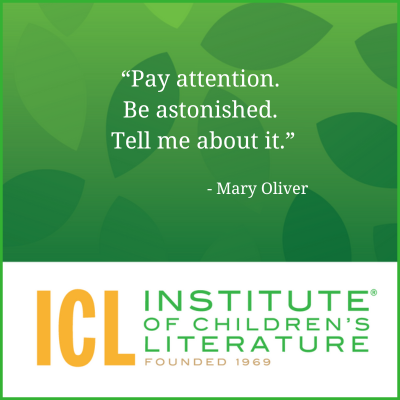
Sensing It: Bringing Show Don’t Tell to Your Nonfiction
What does show don’t tell mean when it comes to nonfiction? Jan Fields shares examples of using sensory details to bring true stories to life for the readers.

Schools are crammed full of reading material. If a school has its own library (and it certainly should), that library will be full of popular fiction, along with a smattering of classics. It will also have lots and lots of nonfiction. Individual classrooms will have still more books—many of them by publishers you don’t normally run into at the bookstores. On top of that schools and teachers use textbooks, activity books, teacher materials, testing materials, and more.

Many writers write solely for the classroom. The school and library market, and educational publishing in general, is huge and largely not talked about in writing circles. We’re all chasing the big deal at a trade publisher, while educational publishing quietly churns out book after book that serves specific needs and has guaranteed sales. What’s the difference between trade and educational publishing and why should you care? Let’s find out.
Now, as with anything in publishing, absolutes are rarely correct. This is one more example of that. In fact, educational publishers do produce fiction, especially fiction to meet specific criteria, like illustrating social/emotional learning or teaching children to read. However, the bulk of what is published by educational publishers is nonfiction. The materials may be student-facing (textbooks or lively nonfiction directed at students) or teacher-facing (materials students don’t see, but that benefit teachers as they approach the classroom).
Outside of textbooks, educational nonfiction for elementary students tends to be heavily illustrated (often with photos), highly focused, high concept (about topics kids tend to get excited about like dinosaurs, vehicles, exciting careers, celebrities, sports, or unique animals), and easy to read. Books for teens will often be written younger than the targeted age group, as the books are often trying to help struggling readers gain the skills they need to read fluently and for enjoyment.
Nonfiction tends to be written in one of two ways. First, writers with a platform (meaning name recognition in a specific area of expertise) will decide on a topic that matches their expertise. They’ll research the book, outline it, and maybe even write a few chapters. Then they will approach publishers (usually trade, but some educational publishers as well) or have their agents approach publishers with what they have so far and attempt to get a contract to write the book.

Another way that nonfiction books, especially for the educational market, come about is through assignment. Skilled writers, especially those with specialties, contact publishers. They usually make contact by sending a resume, a letter of interest, and sometimes a sample of writing. The publisher then looks at these materials and decides if this writer is a good fit for upcoming projects. The publisher will respond by offering information about upcoming projects. Sometimes, the writer will be asked to provide an outline or sample before receiving a contract, but not always. Sometimes it’s enough simply to agree to be on the project, and a contract with deadlines is sent.
You may notice that in both of these cases, the book is not written before the writer has a contract. It is usually researched (at least partially) before signing. After all, the writer will need to know if it’s possible to find enough material to fill a book on the topic. It may be outlined before signing. But the bulk of writing for the classroom is done after the writers signs a contract. This is very different from trade fiction where writers generally do all of their work on a project before ever knowing if anyone is going to want to publish it.
Not all publishers of classroom materials pay particularly well. Some pay really poorly. And not all publishing experiences are going to be positive. Therefore, with publishing, as with most any business deal, you need to take care. Before you make the first contact, ask yourself, do I want to work with these people even if they offer? To make decisions I don’t later regret, I do several steps of research first.

Second, I check to see if they publish content I wouldn’t necessarily want to be sold alongside. Do they seem to have a specific point of view across the line, and is it one you’re comfortable with? I have never had a problem of this sort, but I know some authors who have walked away from a publisher when they see material in their line that they don’t want to be associated with.
Third, I ask around. Other writers can be the best source of information about publishers who pay poorly or slowly. They can tell you about specific issues they encountered. So, cultivate writer friendships. If you aren’t in a position to know many writers, then dig, really dig, online when researching the publisher. If they’ve been paying poorly or not at all, writers will be talking about it, and you’ll find the conversations if you dig deep and don’t automatically accept the first results you find.
Fourth, and this one is optional, I go look for the publishers’ books. If it’s easy to find books published by them in my local library or in my local school district, then I know they’re going to be a publisher that produces a broad line of material, and one that puts time and money into selling what they produce. The easier the books are to find, the more likely they are to (1) pay a bit better and (2) need multiple books from me over time. Also, if I can find examples of the publisher’s books, I can see how they tend to format and organize books. I can see how they focus the material. This will help me when it comes time to write mine.
So, with back-to-school time creeping up on us, it’s a good time to consider expanding your writing, especially if you’ve never considered educational nonfiction. For many young readers, nonfiction books are their favorites. And nonfiction can win awards. In many ways, it can be every bit as rewarding as fiction. Who knows? It might turn out to be your favorite. I’ve known many nonfiction writers who thought they were going to write fiction, but then they tried a nonfiction book, fell in love with the research and the process, and never looked back. Maybe writing for the classroom will be the perfect niche for you.
With over 100 books in publication, Jan Fields writes both chapter books for children and mystery novels for adults. She’s also known for a variety of experiences teaching writing, from one session SCBWI events to lengthier Highlights Foundation workshops to these blog posts for the Institute of Children’s Literature. As a former ICL instructor, Jan enjoys equipping writers for success in whatever way she can.

What does show don’t tell mean when it comes to nonfiction? Jan Fields shares examples of using sensory details to bring true stories to life for the readers.

Part of writing children’s books that can be used in a school setting lies in meeting the needs of the reader. Here are 4 steps to improve readability.

Schools are crammed full of reading material. Who is doing all that writing for the classroom? What’s different about the educational market? Let’s find out.
1000 N. West Street #1200, Wilmington, DE 19801
© 2024 Direct Learning Systems, Inc. All rights reserved.

1000 N. West Street #1200, Wilmington, DE 19801
© 2024 Direct Learning Systems, Inc. All rights reserved.

1000 N. West Street #1200, Wilmington, DE 19801
©2024 Direct Learning Systems, Inc. All rights reserved. Privacy Policy.